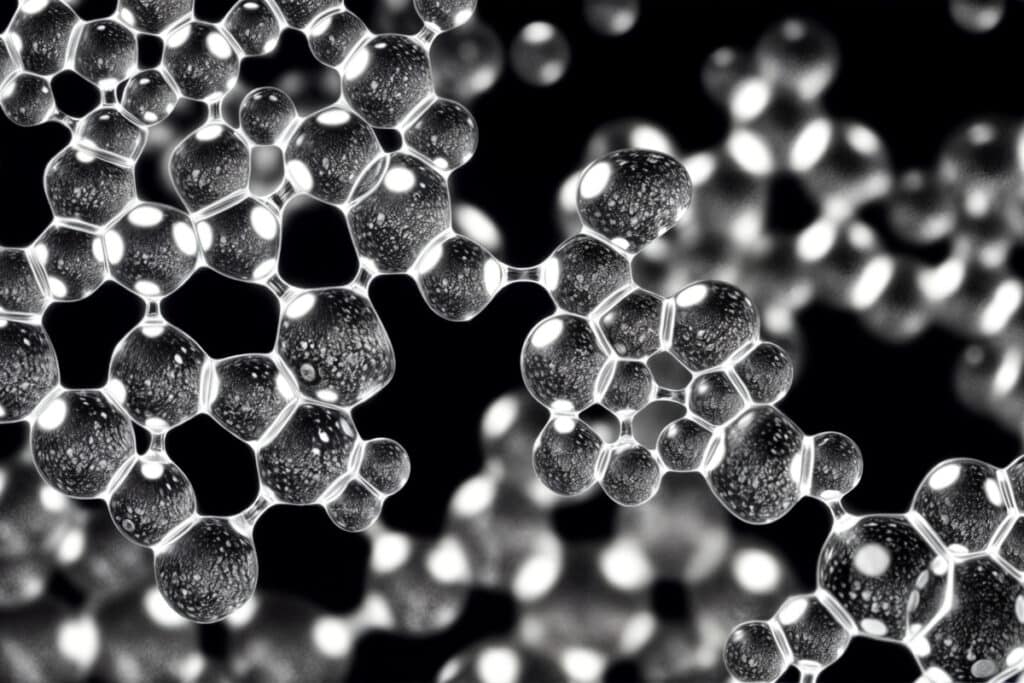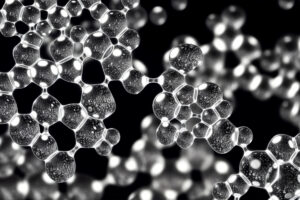The science behind water demineralization: How it works

Imagine a world where the very essence of H2O is transformed, stripped of its minerals, and refined to its purest form. This intricate dance between science and technology unlocks a realm of possibilities, offering us a glimpse into the hidden intricacies of water treatment. As we delve deeper into the science behind water demineralization, we uncover the secrets of how this process works and why it plays a crucial role in various industries and everyday life. So, grab your lab coat and join us on a journey through the molecular maze of demineralizing water – where magic meets chemistry in an enchanting fusion that quenches our thirst for knowledge.
Understanding water demineralization
Water demineralization is a vital process in industries such as pharmaceuticals, power generation, and food and beverage production. The removal of minerals and impurities through ion exchange or membrane filtration ensures that the water used in these sectors is free from harmful contaminants that could affect the quality of the final products. By effectively demineralizing water, companies can maintain consistent quality and meet regulatory standards, ultimately ensuring the safety and efficacy of their products. Understanding the significance of water demineralization is essential for ensuring the success and sustainability of various industries that rely on high-quality, purified water.
What is water demineralization
Water demineralization is a process that involves removing minerals from water, such as calcium, magnesium, and iron. This is typically done through reverse osmosis or ion exchange methods. Demineralization is often necessary to improve the quality of water for industrial purposes, as high mineral content can cause scaling in equipment and reduce efficiency. It is also commonly used in the production of ultrapure water for industries like pharmaceuticals and electronics manufacturing where even trace minerals can be harmful. By demineralizing water, it becomes softer and more suitable for a variety of applications, ensuring optimal performance and minimizing equipment maintenance.
Importance of water demineralization
When it comes to the importance of water demineralization, the benefits cannot be overstated. By removing minerals such as calcium, magnesium, and iron from water, demineralization not only improves the taste and clarity of water but also helps to prevent scale buildup in appliances, pipes, and fixtures. This process also plays a crucial role in industrial applications, where high-purity water is essential for manufacturing processes. Overall, water demineralization is a key part of ensuring clean, safe, and efficient water use in both residential and commercial settings.
Methods of water demineralization
There are several methods used for water demineralization, each with its own unique process and benefits. Some common techniques include distillation, reverse osmosis, and ion exchange. Distillation involves boiling water and collecting the steam, leaving behind minerals and impurities. Reverse osmosis uses a membrane to filter out minerals, while ion exchange swaps minerals for different ions through resin beads. Understanding these methods is crucial in choosing the most effective demineralization process for your specific water needs.
Ion exchange method
When it comes to water demineralization, one of the most effective methods is ion exchange. This process involves removing unwanted minerals from water by exchanging them with other ions, typically sodium or hydrogen. The ion exchange method works by passing water through a resin bed that contains charged particles. As the water flows through the resin bed, the unwanted minerals are attracted to the charged particles and are replaced with the desired ions. This results in high-quality, demineralized water that is ideal for various industrial and commercial applications.
Reverse osmosis method
Reverse osmosis is a common method used in water demineralization processes. This process involves forcing water through a semi-permeable membrane to remove impurities and minerals, resulting in cleaner and more purified water. The membrane used in reverse osmosis is able to effectively separate contaminants such as chlorine, lead, and other impurities from the water, leaving behind only pure H2O molecules. This method is highly effective in producing clean drinking water and is commonly used in household water filtration systems.
Electrodialysis method
Electrodialysis is a popular method used in water demineralization processes. This technique involves the use of an electrical field to separate ions from water, allowing for selective removal of minerals. By passing water through a series of ion-selective membranes under the influence of an electric current, cations and anions are effectively stripped from the water, resulting in a highly purified product. Electrodialysis offers a more efficient and cost-effective way to remove minerals from water compared to traditional methods, making it a valuable tool in water treatment processes.
Factors affecting water demineralization efficiency
Water demineralization is a crucial process in various industries, from power plants to pharmaceuticals. The efficiency of this process is influenced by several factors, including the type and concentration of ions present in the water source, the design and operation of the demineralization system, and the quality of the resin or membrane used for ion exchange. High levels of certain ions, such as calcium and magnesium, can reduce the capacity of the resin or membrane to remove other ions like sodium and chloride. In addition, factors such as flow rate, temperature, and pH can also impact the performance of the demineralization system. By carefully considering these factors and implementing appropriate solutions, industries can ensure optimal water demineralization efficiency for their operations.
Water quality
Water quality is a critical issue that affects not only the environment but also public health. With factors such as industrial pollution, agricultural runoff, and inadequate sewage treatment, our water sources can easily become contaminated. It is essential to prioritize the monitoring and maintenance of water quality to ensure that clean and safe water is accessible to all. By taking proactive measures and implementing proper water management practices, we can protect our water sources and safeguard the health of both humans and wildlife.
Water temperature
When it comes to water demineralization, temperature plays a critical role in the process. The temperature of the water can affect the efficiency of demineralization methods such as ion exchange and reverse osmosis. Generally, warmer water allows for faster and more effective removal of mineral ions. This is because higher temperatures help to increase the kinetic energy of the ions, making them more likely to interact with demineralization agents. Additionally, warmer water can also help to lower the viscosity of the water, allowing for better flow rates and improved ion removal. By understanding the relationship between water temperature and demineralization, we can optimize the process for more efficient results.
Water pressure
In water demineralization, water pressure is key for effective mineral removal. Higher pressure enhances impurity removal by speeding up water flow through the demineralization system. This ensures thorough treatment and mineral-free water. Understanding the connection between water pressure and demineralization helps grasp the science behind this vital purification process.
Applications of demineralized water
Demineralized water, also known as deionized water, has a wide range of applications in various industries. It is commonly used in laboratories for experiments and testing purposes, as it eliminates the presence of minerals that could interfere with results. In the manufacturing industry, demineralized water is used for processes such as rinsing, cooling, and steam generation to prevent mineral build-up in machinery. Additionally, demineralized water is essential in the pharmaceutical and cosmetics industries for manufacturing purposes, ensuring products are free from impurities. The science behind water demineralization is crucial in ensuring the quality and effectiveness of various products and processes.
Industrial use
Water demineralization is a crucial process in various industrial applications, ensuring that water is free from impurities and minerals that can cause damage to equipment. This process involves removing ions such as calcium, magnesium, and other minerals through methods like ion exchange or reverse osmosis. By demineralizing water, industries can prevent scale buildup, improve efficiency, and maintain the quality of their products. Overall, water demineralization plays a significant role in ensuring the longevity and effectiveness of industrial operations.
Laboratory use
Water demineralization is an essential process in laboratory settings, where ultrapure water is required for experiments and equipment maintenance. Through methods such as ion exchange and reverse osmosis, impurities and minerals are removed from the water, ensuring a high level of purity. This demineralized water is critical for maintaining the integrity of experiments and ensuring accurate results. Scientists and researchers rely on this purified water to eliminate any potential sources of contamination and interference in their work.
Medical use
Water demineralization is a crucial process in various medical applications. By removing minerals and impurities from water, healthcare facilities can ensure that the water used in medical procedures is free from contaminants that could potentially harm patients. This is especially important in dialysis centers, where water demineralization is essential to prevent complications for patients with kidney disease. The science behind water demineralization involves the use of specialized equipment and filters that remove ions and other particles from the water, resulting in a pure and safe supply for medical use.
Advantages and disadvantages of water demineralization
When it comes to water demineralization, there are both advantages and disadvantages to consider. One advantage is that removing minerals from water can help reduce scaling in pipes and appliances, extending their lifespan. Additionally, demineralized water can be beneficial for certain industrial processes that require ultrapure water. However, a major disadvantage of water demineralization is the loss of essential minerals that our bodies need for proper function. Without these minerals, drinking demineralized water can potentially lead to mineral deficiencies over time. It’s important to strike a balance between the benefits and drawbacks of water demineralization to ensure overall health and well-being.
Advantages
One of the main advantages of water demineralization is the removal of impurities and minerals that can cause issues with equipment and processes. By eliminating contaminants such as calcium, magnesium, and iron, demineralized water can prevent scale buildup in boilers, cooling towers, and other industrial systems. This results in improved efficiency, reduced maintenance costs, and increased equipment lifespan. Additionally, demineralized water is often used in pharmaceutical and laboratory settings where pure water is essential for experiments and production processes. Overall, the science behind water demineralization offers a wide range of benefits for various industries.
Disadvantages
One disadvantage of water demineralization is that it can lead to a loss of essential minerals in the water. When water is stripped of its mineral content through the demineralization process, it may not provide the necessary nutrients that our bodies need. This can potentially lead to mineral deficiencies if the demineralized water is consumed regularly. It is important to consider the potential drawbacks of demineralization and find a balance between removing impurities and maintaining essential minerals in our water supply.
Future trends in water demineralization technology
As technology continues to advance, the future of water demineralization is looking brighter than ever. With innovative techniques and cutting-edge equipment, the science behind water demineralization is constantly evolving to provide more efficient and effective methods. From advancements in membrane technology to the development of new resins and materials, the future of water demineralization is promising. Keep an eye out for these future trends as they revolutionize the way we purify and treat water.

